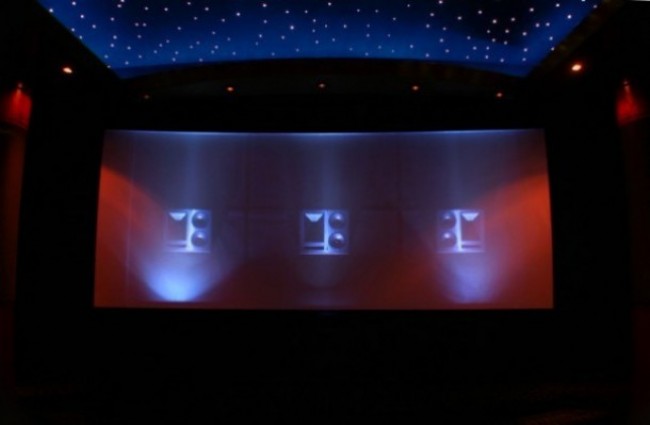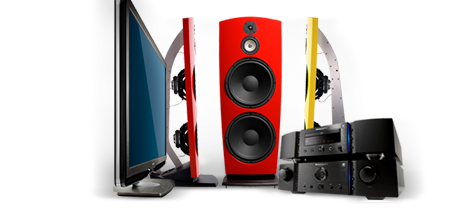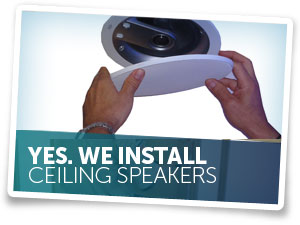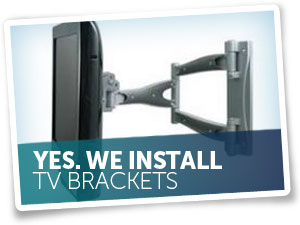Home Theatre Knowledge Base Article
Transparent Projection Screen Setup
Sound-Stage as Hollywood Intended It...
Unlike a solid projection screen, acoustically transparent screens allow speakers to be placed directly behind it.
This is the same method Hollywood uses when they mix the dialogue and soundtrack for movies. It localises audio so that it comes out of the actors’ mouth as in commercial theaters, not above or below the screen.
 If you have a long room with plenty of space between the front and back wall, a false wall application may work best for you. This is where you allocate 600ml to 1000ml behind the audio transparent projection screen to place your main speakers and subs. Please note that some transparent screens require space between the speaker and the screen. Some better quality screens like SmX CineWeave dont require this space.
If you have a long room with plenty of space between the front and back wall, a false wall application may work best for you. This is where you allocate 600ml to 1000ml behind the audio transparent projection screen to place your main speakers and subs. Please note that some transparent screens require space between the speaker and the screen. Some better quality screens like SmX CineWeave dont require this space.
The area behind the audio transparent screen wall can be acoustically treated with wall treatments and bass traps in the corners. This is the best method to use if you already own floorstanding or bookshlef speakers.
A common practice is to treat the entire wall behind the projection screen with acoustic material and use bass traps in the corners. These audio treatments will acoustically help treat your room while being completely hidden behind the false screen wall. All these benefits plus placing the speakers behind the screen to improve the front sound-stage of your theater.
Building a false wall is inexpensive and very easy. Basically the wall is built with studs like a normal constructed wall in your house except you do not need to gyprockt. Most framing methods have a window opening behind the screen area to allow access to the speakers by removing the screen. Other methods also include an access point at the ends of the false wall to get behind the screen wall. Some methods utilise removable panels to access the speaker area as well.
Once your false wall is framed out, you paint it flat black so the light colored studs do not show through the main fabric that will be covering the false wall. Why no gyprock? Because the idea is to make the entire false wall acoustically transparent to utilize the acoustical treatments behind it.
How far do I place my speakers behind the screen?
This may vary depending on the screen. For example the SmX transperant screen requires only 5cm to 10cm.
The amount of space you need behind the false wall is really up to you and is dependant to what is going behind it and what brand of transparent screen is used. Some people commonly use 1 metre to accommodate the subs, speakers, bass traps etc and this leaves space between the speakers and the screen. Other people with bigger rooms can make this area bigger to what they feel necessary for their application.

.......................

.......................

.......................

.......................

.......................

.......................

.
Placing Your Speakers In-Wall
When your room is not long enough to utilize the false wall method above, another application to place your speakers behind the screen is using In-Wall speakers. In-Wall speakers are becoming a more commonly used method now due to higher quality In-Walls being produced. Using In-Wall speakers several years ago proved to be a huge loss in audio quality and were mostly never considered in Home Theater applications but all this has changed. With a nice set of In-Wall speakers, you can hang your transparent screen right in front of them.
The beauty about some of the transparent screens nowadays like SmX CineWeave is that you don't need to worry about having your speakers a certain minimum distance from the screen surface like conventional micro-perforated screens. This allows you to mount your screen on the same wall the In-Walls are installed on. Best of all, you can still acoustically treat the wall behind the screen with an acoustical wall treatment.

............

............

............

............

............








